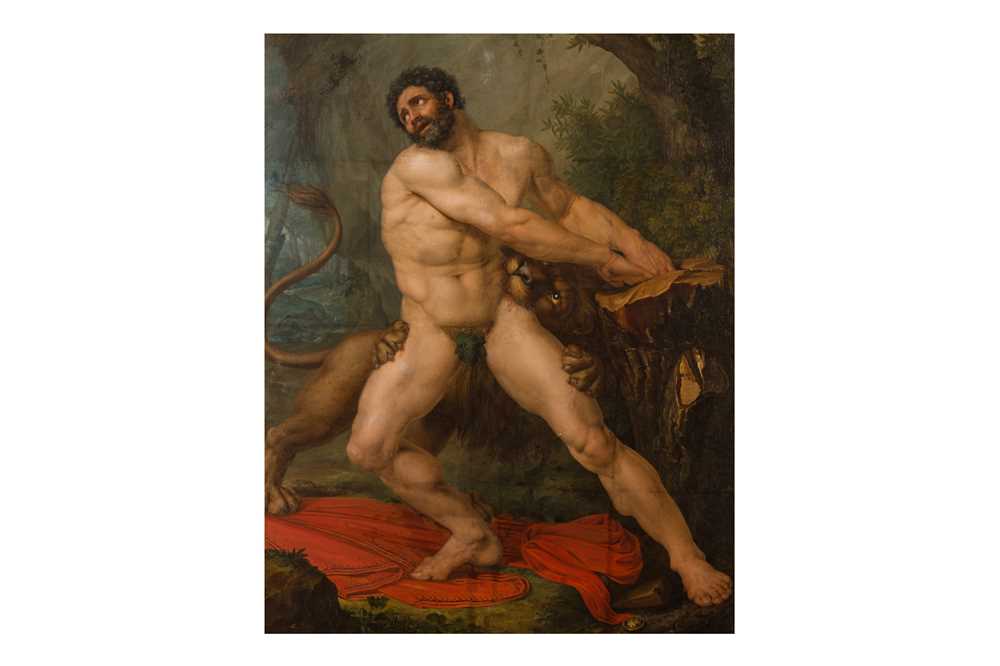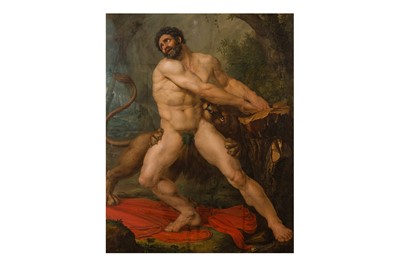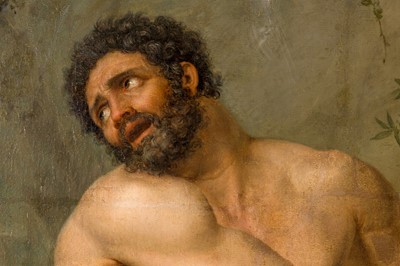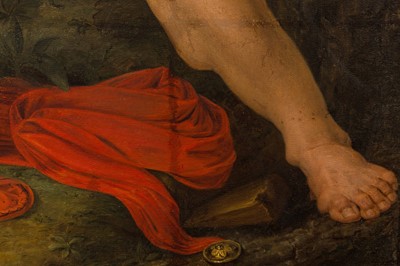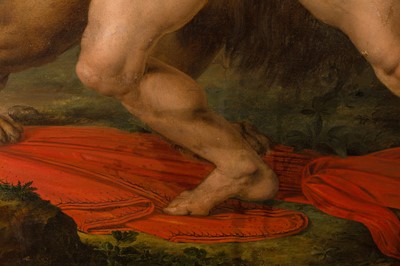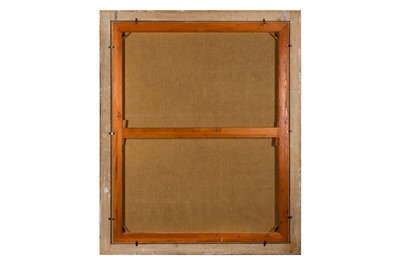17th Jan, 2024 12:00
Old Masters & 19th Century Art
BOLOGNESE SCHOOL (EARLY-MID 19TH CENTURY)
BOLOGNESE SCHOOL (EARLY-MID 19TH CENTURY)
Milo of Croton
oil on canvas
183 x 145 cm
The style and overall type of the painting points to its likely execution in Bologna during the early 19th century.
The work can be compared closely on stylistic and compositional grounds to treatments of the subject with the influece of the School of Bologna, Annibale Carracci (1560–1609) and Guido Reni (1575–1642) and notibly a work by Pietro della Valle (Italian 1827-1891 oil on canvas). Only one securely documented work of this subject by the artist is known and held by the Accademia Nazionale di San Luca.
A comparison with the present work reveals a similar spirit and vigour to the brushwork, a comparable treatment of light and a similar characterisation of the figure, notably in the definition of muscular torso.
The present work has been previously attriburted to Giuseppe Guizzardi (1779-1861) although on comparison the treatment and composition seem to exceed his known works.
According to Giovanni Bedotti, the best restorer in Italy was Giuseppe Guizzardi from Bologna; his skill was such that he could repaint heads by Guido Reni, Domenichino and Albani, deceiving even the most expert eye. In a letter to the Count Teodoro Lechi, his brother Pietro described the extraordinary manipulations of which he was capable: “If you should then wish to be broadly instructed in this art, you should come to Bologna and frequent his studio as do so many foreigners, and particularly the English, both dealers and art-lovers, who pass many hours there. You would then see things which you have never seen before".
Milo of Croton was a renowned ancient Greek athlete who lived during the 6th century BCE. He was a wrestler and is often remembered for his exceptional strength and legendary feats. Milo's birthplace was Croton, a Greek colony in southern Italy.
He was a six-time Olympic victor; once for boys wrestling in 540 BC at the 60th Olympics, and five-time wrestling champion at the 62nd through 66th Olympiads. Milo kept on competing, even well after what would have been considered a normal Olympic athlete's prime; by the 67th Olympiad, he would have been over 40 years of age. He also attended many of the Pythian Games.
His historicity is attested by many classical authors, among them Aristotle, Pausanias, Cicero, Herodotus, Vitruvius, Epictetus, and the author of the Suda, but there are many legendary stories surrounding him.
Diodorus Siculus wrote that Milo was a follower of Pythagoras and also that he commanded the Crotonian army which defeated the Sybarites in 511 BC, while wearing his Olympic wreaths and dressed like Hercules in a lion's skin and carrying a club.
Sybarites took the field with an army of three hundred thousand men. The Crotonians had but an hundred thousand, which were commanded by Milo the wrestler, who at the first onset put to flight that wing of the army which was opposite to him: for he was of invincible strength, and had courage answerable to his strength, and had been six times victor at the olympic games; when he began his fight, he was crowned with olympic wreaths, wearing (like Hercules) a lion's skin and a club; at last he gained an absolute victory, and thereupon was much admired by his countrymen.
Milo's death as represented in the present work, became a popular subject in art in late Italian Renaissance sculpture, continuing to around 1900, allowing the artist to show his skill in a dramatic anatomical pose. It was an equivalent of the Roman group of Laocoön and His Sons.
Sold for £13,750
Includes Buyer's Premium
Do you have an item similar to the item above? If so please click the link below to submit a free online valuation request through our website.
